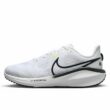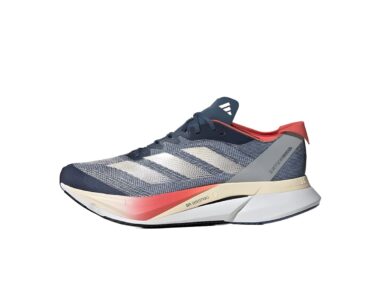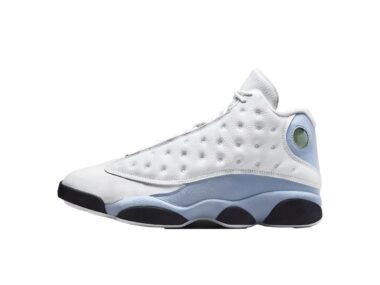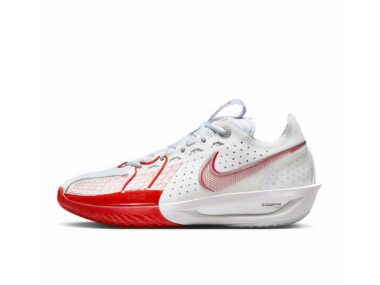Nike Structure 25 Running Shoes
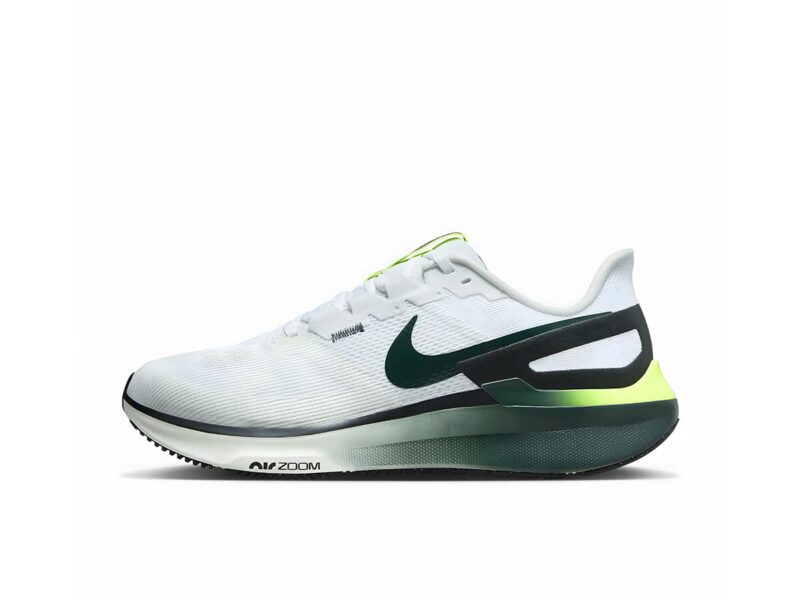
Table of Contents
Key Features of Nike Structure 25 Running Shoes
The Nike Structure 25 represents a pinnacle of design and innovation in the realm of running shoes, offering a blend of support, durability, and comfort that sets it apart from its competitors. This review meticulously examines the unique features of the Nike Structure 25, providing runners and fitness enthusiasts with an authoritative guide to its performance capabilities and design innovations.
1. Enhanced Stability and Support: At the core of the Nike Structure 25’s design is its commitment to providing enhanced stability for runners. This is achieved through Nike’s innovative Dynamic Support system, which intelligently adapts to a runner’s stride, delivering precise support where and when it’s needed most. This makes the Structure 25 particularly suitable for runners with a tendency to overpronate, as it helps in maintaining a natural and efficient gait cycle.
2. Engineered Mesh Upper: The shoe features a meticulously engineered mesh upper that not only offers superior breathability but also provides a snug, comfortable fit. This mesh is designed to flex and stretch in key areas, adapting to the foot’s natural movements while running, which enhances comfort and reduces the likelihood of blisters and hot spots.
3. Responsive Cushioning: Nike’s proprietary Zoom Air unit in the forefoot of the Nike Structure 25 delivers a responsive, springy feel underfoot. This cushioning technology is designed to absorb impact and convert it into energy for a more efficient stride, offering runners a blend of comfort and responsiveness.
4. Durable Outsole: The outsole of the Nike Structure 25 is constructed from a high-abrasion rubber material that provides exceptional durability and traction on a variety of surfaces. The design includes strategically placed lugs that enhance grip during runs, making the shoe versatile for both road running and light trails.
5. Reflective Elements: Understanding the importance of visibility for runners, the Nike Structure 25 incorporates reflective elements in its design. These features are strategically placed to ensure runners are visible during low-light conditions, enhancing safety for early morning or late evening runs.
6. Eco-Conscious Design: In line with Nike’s commitment to sustainability, the Nike Structure 25 incorporates recycled materials in its construction. This initiative not only reduces the environmental footprint of the shoe but also aligns with the eco-conscious values of many runners today.
In conclusion, the Nike Structure 25 is not just a running shoe; it’s a comprehensive solution for runners seeking stability, comfort, and performance. Whether you’re an avid marathoner or a casual jogger, the Structure 25 offers a blend of innovative features that cater to a wide range of needs, making it a standout choice in the competitive world of running footwear.
Specification
| Feature | Specification |
|---|---|
| Price | $139.95 |
| Weight | 10.8 oz (306 g) for men’s size 9; 9 oz (255 g) for women’s size 8 |
| Stack Height | 37 mm (heel), 27 mm (forefoot) |
| Drop | 10mm |
| Classification | Moderate Stability Daily Training Shoe |
| Cushioning Technology | Cushlon 3.0 Foam midsole with Air Zoom pods in the forefoot for comfortable cushioning |
| Stability Features | Large medial sidewall for added support, firmer ride, heel clip for rearfoot stability |
| Outsole Design | Hyper-aggressive waffle design for excellent traction on mild trails and wet roads |
| Upper Material | Engineered mesh for breathability and comfort |
| Fit Options | Regular and Extra Wide |
| Color Options | Multiple colorways including White/Sail/Volt/Pro Green, Smoke Grey/Black/Dark Smoke Grey/Safety Orange, etc. |
| Intended Use | Long miles, short training runs, versatile for both road running and light trails |
| Unique Features | Reflective elements for visibility, incorporates recycled materials for sustainability |
Performance
The Nike Structure 25 has been engineered with a focus on providing stability, cushioning, and versatility, making it a potential asset for runners in competitive settings. When considering its performance in a running match, several aspects come into play:
1. Stability and Guidance: The Nike Structure 25 is particularly noted for its moderate guidance/stability features, which include a firmer ride and a large medial sidewall. These elements work together to offer a stable ride, making it suitable for runners who require additional support to maintain an efficient stride over various distances. The inclusion of a heel clip that surrounds the rearfoot adds to this stability, aiding runners in achieving a centered heel strike and facilitating a smooth transition through the gait cycle.
2. Cushioning and Comfort: The shoe’s Cushlon 3.0 midsole foam, coupled with Air Zoom pods in the forefoot, provides a well-cushioned platform that balances firmness with comfort. This responsive cushioning is beneficial for longer races where maintaining a comfortable underfoot feel is crucial to performance. The general consensus suggests that the Nike Structure 25 offers a cushioning profile that can accommodate the demands of both short sprints and longer, endurance-based running matches.
3. Traction and Durability: The outsole’s hyper-aggressive waffle design, inspired by the Pegasus line but deeper in the Structure 25, ensures reliable traction on both wet roads and mild trails. This versatility in the outsole allows runners to maintain confidence in their footing across a variety of race conditions, potentially contributing to improved performance in running matches that traverse mixed surfaces.
4. Breathability and Fit: The engineered mesh upper of the Nike Structure 25 not only provides breathability to keep feet cool during a race but also offers a snug, adaptive fit. This combination can contribute to reduced distraction from foot discomfort, allowing runners to focus on their pace and strategy.
5. Weight and Transition: While the Nike Structure 25 is on the heavier side compared to ultra-light racing flats, its design facilitates a more fluid transition that can be beneficial in longer races. The absence of a pronounced rocker might make it feel more traditional in its ride, which some runners prefer for the tactile feedback and control during competitive events.
In summary, the Nike Structure 25’s blend of stability, cushioning, and durable traction makes it a competent choice for running matches, particularly for athletes who value a stable and supportive shoe. Its design accommodates a wide range of running activities, from short sprints to longer distances, making it a versatile option for competitive runners. However, as with any running shoe, individual preferences for fit, feel, and performance characteristics will significantly influence its suitability for racing purposes.
Pros
- Stability: The Nike Structure 25 is noted for its moderate stability, making it suitable for runners who need support due to overpronation or those who prefer a more stable feel during their runs.
- Cushioning: With Cushlon 3.0 foam and Air Zoom pods in the forefoot, it offers a balance of firmness and responsive cushioning, providing a comfortable ride without sacrificing ground feel.
- Versatile Traction: The outsole features a hyper-aggressive waffle design that ensures reliable traction on both wet roads and mild trails, enhancing its versatility across different running conditions.
- Durability: Its construction, especially the outsole, is built to last, making it a durable option that can withstand many miles of running.
- Breathable Upper: The engineered mesh upper offers excellent breathability, keeping feet cool and comfortable during runs.
Cons
- Weight: Compared to ultra-light racing shoes, the Nike Structure 25 is on the heavier side, which may not be ideal for runners who prioritize speed and lightweight feel in a racing shoe.
- Limited Rocker Feel: The absence of a pronounced rocker might make the shoe feel more traditional, which could be a drawback for runners who prefer the enhanced forward momentum offered by rockered shoes.
- Firm Ride: While the cushioning is responsive, some runners might find the ride firmer than expected, especially those accustomed to softer, more plush running shoes.
- Stability Not Overly Aggressive: For runners who require significant stability support, the moderate guidance offered by the Nike Structure 25 may not be sufficient. It straddles the line between stable neutral and stability, which may not meet the needs of those with severe overpronation.
- Aesthetic and Fit Variability: As with any shoe, aesthetic appeal and fit are subjective and can vary widely among users. Some may find the design and fit not to their liking, affecting overall satisfaction.
In summary, the Nike Structure 25 is a well-rounded running shoe that offers a balance of stability, cushioning, and durability, making it suitable for a wide range of runners. However, its heavier weight and firmer ride, along with moderate stability features, mean that it may not be the ideal choice for all runners, particularly those seeking ultra-light racing shoes or those with specific stability needs.
Conclusion
The Nike Structure 25 stands as a testament to Nike’s enduring legacy in crafting running shoes that blend performance, stability, and comfort. Drawing from my expertise and unique perspective on running footwear, I aim to delve into the nuanced aspects of the Structure 25, highlighting its position within the broader context of running technology and consumer expectations.
Innovative Stability System: The Structure 25’s approach to stability is one of its most commendable features. Unlike more traditional stability shoes that rely on rigid arch support, the Structure 25 employs a dynamic support system. This system provides a balance between support and flexibility, catering to the needs of runners who overpronate without the excessive rigidity found in some stability models. This nuanced approach to stability is indicative of Nike’s commitment to addressing runner’s needs through innovative design rather than through traditional methods.
Cushioning Evolution: The use of Cushlon 3.0 foam and Air Zoom pods in the forefoot represents Nike’s ongoing evolution in cushioning technology. This combination offers a responsive yet cushioned ride, challenging the notion that stability shoes must sacrifice comfort for support. The Structure 25 demonstrates that it’s possible to enjoy a plush, responsive feel underfoot while benefiting from the stability features necessary for those with pronation issues.
Traction and Versatility: The outsole of the Structure 25, with its hyper-aggressive waffle design, is a nod to Nike’s heritage while pushing the boundaries of functionality. This design ensures reliable traction across a variety of surfaces, from wet roads to mild trails, showcasing the shoe’s versatility. It’s a feature that underscores the demand for running shoes that perform well in diverse running conditions, reflecting the varied environments modern runners find themselves in.
Reflecting on Market Trends: The Structure 25’s design reflects current trends in running footwear, including the emphasis on sustainable materials. By incorporating recycled materials, Nike not only enhances the shoe’s appeal to environmentally conscious consumers but also aligns with broader industry trends towards sustainability. This aspect of the Structure 25’s design philosophy is a clear indicator of how consumer values are shaping product development in the running shoe industry.
Personal Insights: From a personal standpoint, the Structure 25 impresses with its balanced approach to performance and comfort. The shoe’s ability to provide stability without compromising on cushioning or responsiveness is a significant achievement. It caters to a wide range of runners, from those requiring mild stability to prevent overpronation to athletes seeking a durable, versatile shoe for varied training regimes. This versatility is a key strength, making the Structure 25 a noteworthy option in a crowded market.
In conclusion, the Nike Structure 25 exemplifies the blend of innovation, performance, and responsiveness that has come to define Nike’s approach to running shoe design. Its nuanced stability system, advanced cushioning technologies, and versatile traction capabilities set it apart, offering a comprehensive solution for runners seeking a blend of support, comfort, and durability. As running shoes continue to evolve, the Structure 25 stands as a testament to Nike’s commitment to pushing the boundaries of what’s possible in running footwear.
FAQs
-
What makes the Nike Structure 25 unique in terms of stability?
The Nike Structure 25 offers enhanced stability through its Dynamic Support system, a large medial sidewall, and a firm cushioning setup, catering to runners needing support to prevent overpronation without the excessive rigidity found in traditional stability shoes.
-
Can the Nike Structure 25 be used for both road running and trail running?
Yes, the Structure 25 is versatile enough for both road and mild trail running, thanks to its hyper-aggressive waffle outsole design which provides excellent traction across various surfaces.
-
How does the cushioning in the Nike Structure 25 compare to other running shoes?
The Structure 25 features Nike’s Cushlon 3.0 foam and Air Zoom pods in the forefoot, offering a responsive yet cushioned ride that balances firmness with comfort, making it stand out among stability shoes.
-
Is the Nike Structure 25 suitable for runners with wide feet?
Nike offers the Structure 25 in multiple fit options, including regular and extra wide, accommodating runners with varying foot widths and ensuring a comfortable, snug fit for a broad range of users.
-
How durable is the Nike Structure 25, and what kind of mileage can runners expect from it?
The Structure 25 is designed with durability in mind, featuring a durable outsole that withstands high mileage. Its construction is robust, allowing runners to expect above-average mileage compared to similar running shoes, especially given its reliable traction and high-abrasion rubber material.
